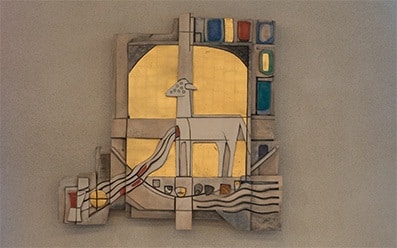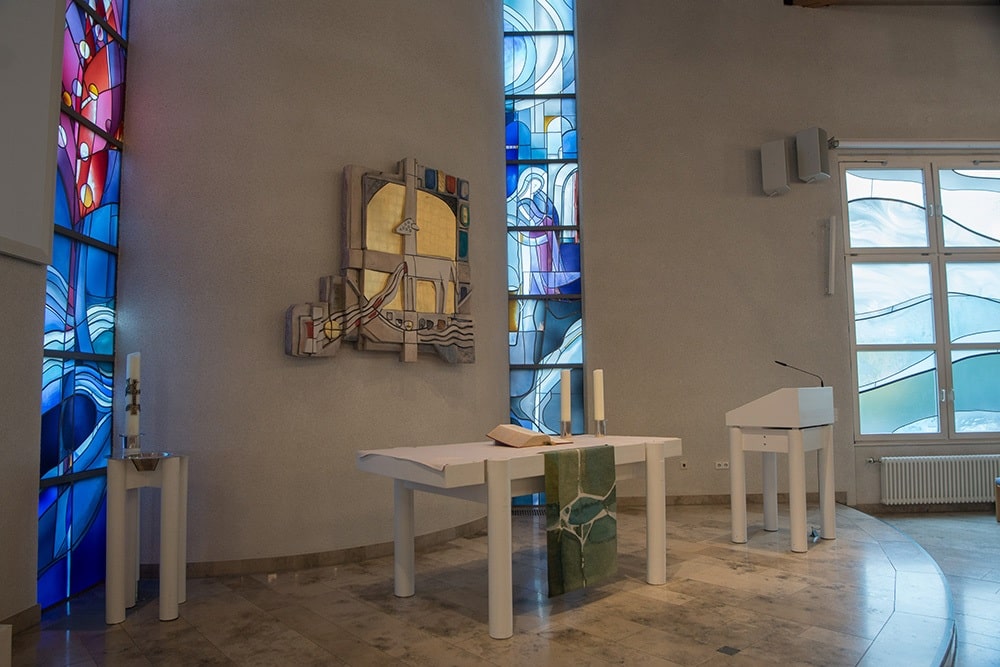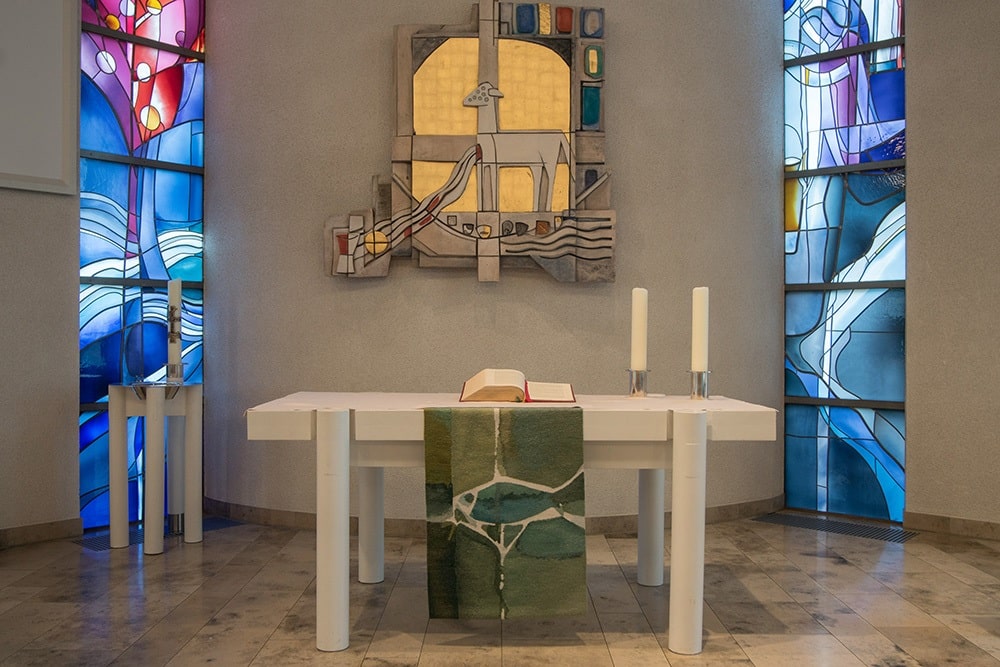LAMB OF GOD
1990
OIL ON WOOD
160 X 160 X 12 CM
The Lamb of God in the Church of Reconciliation in Schorndorf is at the centre of a group of works that combines such diverse materials as wood, glass, stone and fabric into a thematic unity: Reconciliation, Forgiveness, Grace. The capital altar relief shows the seven eyes of the lamb described in the Revelation of John, which are answered by seven seal- or coat-of-arms-like forms below, as well as seven irregular rectangles framing the animal above and to the right. Eyes, seal and tableau result in a largely textually faithful transfer of the biblical narrative.
What is unusual, however, is the pictorial form: The raised layers of the relief are part landscape, part architecture, part cross composition, and transcend the flatness as well as the right angles of conventional pictorial forms in that some elements of the work, such as the blood of the animal, are carried beyond the central high rectangle with cross and lamb. Andreas Felger could hardly express his endeavour to reach beyond the boundaries of the picture more clearly. The picture steps over the banks, reaches out onto the wall surface, curves towards the viewer and reveals its material substance.
If the relief is the material and sign of a flooding, the surrounding, corresponding shapes are the planes in which the river finds its way. The blood flow of the lamb, the water at the foot of the tree of paradise (the place where the four streams of paradise originate, cf. Gen 2:10 EU), the river of life, the father and the prodigal son are united: All this – abstracted – is finally also found in Felger’s dynamic glass structures on one of the side walls, which extend this leitmotif into the space and fill it. The vertically soaring church architecture is made to flow diagonally and horizontally.
The concept of reconciliation can also be understood in this way here: The entire breadth of the different works created by Felger come together to form a balanced whole, from the door handle to the paraments to the altar table and finally via the baptismal font and the stained glass windows to the central wooden relief with the Lamb of God. Here, in an exemplary way, the individual design units merge into a larger whole, a total work of art.
Text by Marvin Altner



